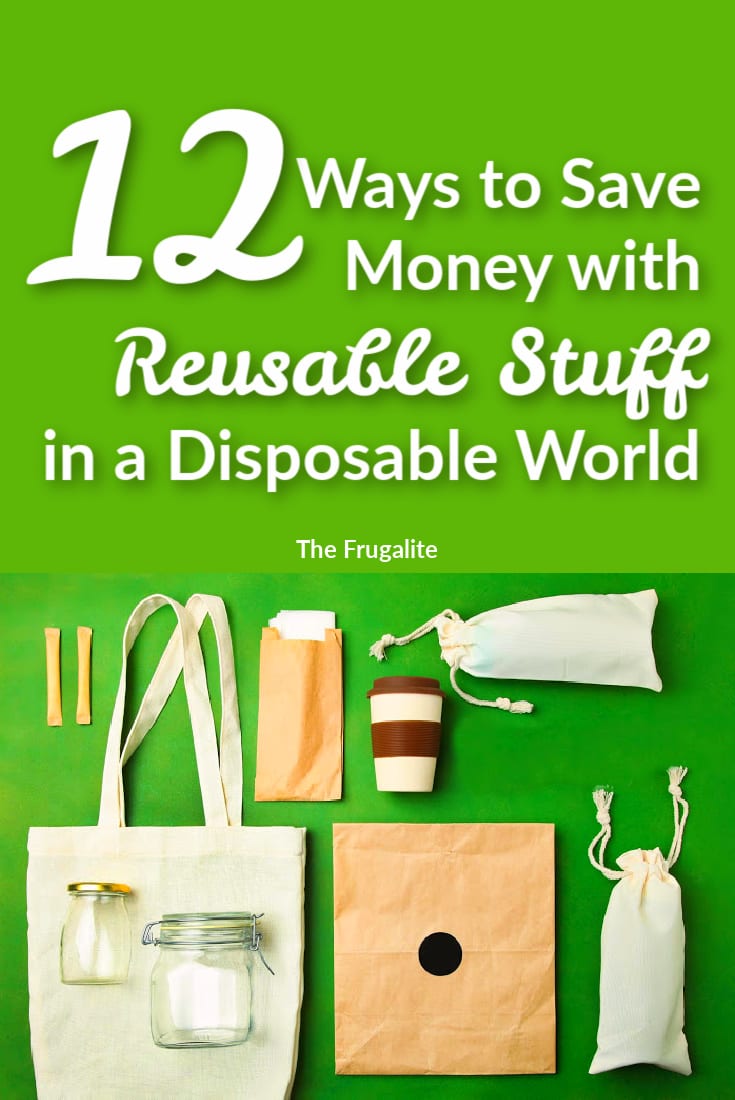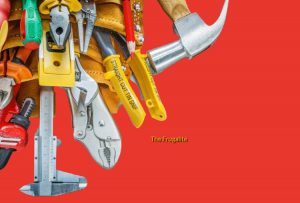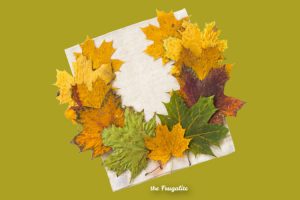(Psst: The FTC wants me to remind you that this website contains affiliate links. That means if you make a purchase from a link you click on, I might receive a small commission. This does not increase the price you’ll pay for that item nor does it decrease the awesomeness of the item. ~ Daisy)
By the author of The Ultimate Guide to Frugal Living and What to Eat When You’re Broke
We live in a convenience-driven society. Fast food businesses thrive while home cooking flounders. Trips to the pharmacy can now be undertaken without getting out of your car, using the handy drive-through. Standard cleaning products are quickly being overtaken by disposable items you toss in the trash after one use. We’ve been brainwashed by the marketing companies to believe that the simplest things are wildly inconvenient and that in our time-crunched society we must pay for shortcuts.
All of this convenience has a high price tag. Not only are you spending money unnecessarily at the check-out counter for all of that convenience, but the planet is getting buried under mountains of rubbish. The average American produces 1600 pounds of garbage per year.
Did you ever stop to think about how many disposable things you buy? We do our shopping monthly instead of weekly, and this makes it a lot more noticeable on our bill when we load up with things that will be thrown out. I just checked the price, and a 6 pack of good quality paper towels would add about $8 to my bill. If you’re in a position in which every penny counts, that $8 could be buying you a necessity like food. Even if you have no concern about the landfills, you probably want to save money, right? Pennies each week add up to dollars each month, and hundreds of dollars over the course of a year.
A Dozen Things You Will Never Have to Buy Again
It probably goes without saying that if you’re on a strict budget, you should not be buying silly things like cleaning wipes for the counters, paper plates, disposable dusters, and, for crying out loud, disposable toilet brushes. However, there are lots of other conveniences that can be just as easily replaced with reusable items.
Here are 12 things that you don’t need to spend money on during your regular shopping trips. Once you make the initial purchase, you won’t need to replace these items for a very long time. Trust me, you won’t even miss the throwaway version once you get used to the higher quality reusable products.
Coffee Filters
We love coffee in our family. There’s a pot on for most of the day every day. Not only do we have a conventional drip coffee maker, but we also have a Keurig for a quick cup in the afternoon. Here’s the awesome thing: you can get reusable filters for both for well under $10. We’ve replaced the throwaway paper filters for our coffee pot with a little mesh basket. There’s also a pointy version if your coffee maker uses the cone type of filter. For the Keurig, you can get reusable pods. This saves money by allowing you to use your own high-quality coffee at a fraction of the cost of K-cups. I keep these filled and in the fridge so that I can have a quick cup of afternoon coffee without spending 75 cents for it.
Napkins
This is a no-brainer. We have a lovely collection of cloth napkins, many of which have been purchased at yard sales or thrift stores. I don’t get fabrics that require ironing (made that mistake before!) and we simply toss them in the hamper just off the kitchen when they need to be washed. I think they look so much prettier on the table than the paper kind. If it isn’t yard sale season, you can pick some up from the dollar store. Some people like to stick to white so that stains can easily be bleached out while others like to assign each family member with a specific color of napkin so that they can be used for more than one meal.
Paper Towels
At the brokest point of my life, I decided that paper towels were completely unnecessary when they meant the difference between buying a roast that would feed my family for several days or not. I use – gasp – towels. I’m a big fan of the bar mop type of towels for cleaning. They’re very absorbent and soak up big spills quickly and easily. You can also use this easy tutorial to make your own un-paper towels for an even lower cost.
Feminine Hygiene Products
Avert your eyes, gentleman readers. Breaking news: tampons and disposable pads are actually not necessary for life as a woman. Women had monthly cycles well before Tampax formed a company to convince them that a disposable product was imperative. There are lots of different options, including fabric pads, feminine cups, and natural sea sponges that just get rinsed out and reinserted. You can get washable, waterproof bags for storing the used pads if you are away from home that are designed to keep moisture and odor contained. These are all actually much healthier than commercial tampons and pads that contain all sorts of toxic “absorbent” materials. If you are a DIY kind of person, here are instructions to make your own pads.
Diapers
With baby number 1 we lived in a tiny second-story walk-up with no washer and dryer, so I used disposable diapers. With baby number 2, our circumstances had improved and I cheerfully embraced cloth diapers. The cloth diapers today are so much better than the ones our grandmothers used. They have liners, snaps, different sizes, and all sorts of conveniences to make a mama’s life easier. In fact, they look a lot like disposables. You can often pick these up secondhand since they can’t be used for other purposes like the old-fashioned foldable diapers. While the initial purchase is an investment, if you’re committed to using cloth, you will save hundreds of dollars throughout your child’s diaper days.
Baby Wipes
Umm….use washcloths. I don’t have any links or snazzy how-tos or advice, except that we have black washcloths specifically for removing makeup so that you don’t see any mascara stains.
Dryer Sheets
Replace dryer sheets but still have soft clothing with those nifty dryer balls, or even tennis balls. Even a crumpled piece of aluminum foil can be tossed in to remove static cling, and that same piece of foil will be good for up to 6 months. You can make your own dryer balls using 100% wool yarn. I like to scent them with a little bit of essential oil so that I get a lovely clean smell without the nasty dryer sheet chemicals. (My favorites are a mix of Basil and Lavender – trust me, it’s fresh and delightful!
Lunch Bags
Everyone is enamored with the pretty lunch bags that almost look like purses, but you can take it a step further. Get rid of the plastic sandwich and snack baggies and use fabric ones that can be tossed in the wash. You can even make your own in about 15 minutes. Of course, only you can judge whether or not these will make it home. If your kids toss them in the trash or lose them, the fabric version will be exponentially more expensive.
Shopping Bags
In our area, many of the stores now charge for shopping bags. At 10 cents a pop, this can add up over the course of a year to well over $50. (It could be far more depending on how much you buy). Stash some reusable bags in your car so that you always have them available. Making your own from old t-shirts can be a fun (and free) project to do with kids.
Swiffer Covers
We used to live on a farm. A dusty, dirty farm. With a cat and dog that come in the house. This meant our floors needed to be dust-mopped every single day. I like the convenience of a Swiffer, but not the expense of the disposable covers for it. With machine-washable covers, I could use a fresh one each time I dust-mopped. Also, check out this super-easy-peasy version you can make from a sock. (Finally, a way to make use of those lonely, single socks!)
Water Bottles
Did you know how many water bottles get thrown out each year? More than 22 billion!!!!! That is almost an unfathomable amount. Purchasing water in individual bottles is awfully hard on the budget, too. If are worried about chemicals in your tap water, you can filter it and fill your own bottles. If you must purchase your water, go with the 5-gallon refillable jugs, and dispense it into your own BPA-free bottles. My kids are older, and we use glass bottles with a neoprene sleeve for protection.
Batteries
With flashlights, remotes, and other gadgets, we go through about a kajillion batteries a year, although less than when my kids were little and had battery-operated toys. We use almost exclusively rechargeable batteries. These have to be purchased far less frequently, need a simple recharging device, and can save you a bundle over time.
If your budget is tight like mine, every penny counts. Be sure to spend your money wisely by investing in reusable items, making the ones you can, and hitting the thrift stores to channel our frugal grannies.
What reusable products do you use?
What reusable products do you use in your household in place of disposable ones? What can you add to this list? Please share in the comments section so that we can revisit this topic in a follow-up article!
About Daisy
Daisy Luther is a coffee-swigging, adventure-seeking, globe-trotting blogger. She is the founder and publisher of three websites. 1) The Organic Prepper, which is about current events, preparedness, self-reliance, and the pursuit of liberty; 2) The Frugalite, a website with thrifty tips and solutions to help people get a handle on their personal finances without feeling deprived; and 3) PreppersDailyNews.com, an aggregate site where you can find links to all the most important news for those who wish to be prepared. Her work is widely republished across alternative media and she has appeared in many interviews.
Daisy is the best-selling author of 5 traditionally published books, 12 self-published books, and runs a small digital publishing company with PDF guides, printables, and courses at SelfRelianceand Survival.com You can find her on Facebook, Pinterest, Gab, MeWe, Parler, Instagram, and Twitter.












32 thoughts on “12 Ways to Save Money with Reusable Stuff in a Disposable World”
I already do most of these things. Over the years I’ve purchased bandanas that we keep in a little wire basket on the table for our napkins. I actually had a guest tell me she’d rather have a paper towel so I didn’t have to wash it! They take up no extra room in a load of laundry.
Also love the snack pack idea. I make little zippered cotton bags that I use for carrying nuts and other dry foods in my purse, or when I travel, but these laminated cotton bags are adorable. May have to look into that.
And I’ll never understand why people use so many plastic water bottles! So much waste. I always have my own reusable container in my hand.
Great article!
We use cloth napkins , cut up old towels in a jar with vinegar made from Apple acraps for bench wipes, I sewed my own bread bags for homemade bread, we use cloth nappies and old face washers for bottom wipes, great for kids with allergies. I use cloth pads and wet bags for when I’m out, I have a larger one for the cloth nappies. I try not to use the dryer at all and use a clothes rack. I make bees wax wraps. And use lunch boxes and bags and ice packs. We keep drink bottles in the car with a 2 litre gym water bottle to fill them.
We also use hankies , and I’ve sewed our own produce bags . All little steps helps my budget and the environment
I love – so much – that the eco-friendly thing to do is also the budget-friendly thing to do. Transitioning to reusable was so much easier in my family, because while I was being the “Fundy Wendy” about the whole green movement, once I showed my dollar pinching husband the cost savings he was all on board – and we both got what we wanted. Woot!!
I switched from paper tissues to cloth hankies… years ago! (There is still a box of paper tissues just in case someone needs them. ) When going out, I carry a clean hankie in my pocket. Restrooms now use air-dryers, and the cloth hankie is so much nicer for drying hands, and when damp, makes a great face wipe on a hot day.
I use glass jars for storing leftovers in the refrigerator. They wash up easily, and cost us nothing.
We make our own facial cleanser & toner wipes – I got some bamboo facial rounds and pour homemade cleanser and toner over them, in shirt mason jars. They even came with little bags for throwing in the washer. (I tried a wash cloth originally, but it was irritating for my rosacea; the bamboo is softer and doesn’t hurt my skin.)
We also use handkerchiefs instead of facial tissue, knit scrubbies for the kitchen (a friend makes them out of tulle and they even work on cast iron), and everything you mentioned above. Great minds? ?
I’m going to try those bamboo rounds. My skin is kind of delicate too!
Sometimes only a plastic bag will do. Zip lock bags can be washed so easily with a drop of dish washing soap and a long handled brush. I use them over and over and over. A small leak can be patched with a little tape. When they finally fail I fill them with fish skins, onion skins, etc. that would otherwise stink up the kitchen and can’t go to the worm bin. At last they hit the garbage can.
I save the covered plastic tubs from cottage cheese, large size yogurt, margarine, cool whip, etc. They wash well, I can mark the lids with a sharpie so I can keep track of what it is and when I put it away, and when they eventually crack or get beyond washing, I can toss them without feeling guilty about the money or the environment (sort of). I do the same with the ridiculously extravagant little glass bottles from Starbucks coffee…those bottles are great for canned milk or refilling with homemade iced coffee to take along. Also glass jelly and mayonnaise jars: the lids wash well and don’t retain odor or rust.
You can save and wash the plastic net bags from produce and make pot scrubbers or little bags for soap scraps.
Empty soda bottles can be washed and reused many times for unbreakable water bottles before they get funky.
A set of bottle beans is great for cleaning the inside of any reusable bottle or jar, and will pay for themselves quickly. Great for travel mugs and Thermoses too.
Sometimes a useful product choice lets you avoid having to regularly pay for consumables or obnoxiously often maintain things.
I never buy bottled water, period. About 20 years ago my local city water started tasting algae terrible from their lake supply, so I found a $15 thrift store deal on a light commercial water distiller with a broken fan blade. That was an easy fix which solved my drinking and cooking water issues ever since. This was long before I learned about the unregulated garbage (like prescription medications, etc) that cities are not required to remove.) I save the Sawyer water filters for travel or bug-out bag use, while remembering that once used, they must be forever thereafter be kept from freezing which would break the tiny capillary tubes.
Similarly, I got tired of the regular and surprise-gotcha interrupting maintenance on my gasoline-powered lawn mower, so I found another thrift store deal on an electric. I run it with a very long orange power cord so I can always see to avoid running over and cutting that cord. So far about the only maintenance has been sharpening the blade maybe twice a season and replacing the carbon contacts about every 10 years. That beats the gasoline engine mess altogether — a different kind of consumable that ate up my time and cash.
Home shop tools that are battery powered that one uses only intermittently can be a pain when you want to do a surprise job but have to wait for a charge up. In contrast to a commercial shop’s frequent and regular needs where batteries make sense, I rebelled and have stuck with electric power cords — and never ever have to mess with discharged batteries (or the expense of dead batteries) for shop tools — but always have instant and reliable results.
However, there are times when only the right consumable for a job is in order. BarkeepersFriend is an amazing cleaner, polisher and corrosion remover that’s been around since 1882. Every Walmart carries it. It can remove light rust or corrosion from many kinds of metals (the exceptions are clearly stated on the container), and even remove Sharpie marks when needed. Vastly more details on https://www.barkeepersfriend.com/
–Lewis
Hello Lewis,
Sharing a couple of comments:
1) On the water filtration I use a Berkey Gravity Fed system. There are multiple size options. It is an investment due to the cost, but a substantial step up in filtration whether for daily use or for emergency situations. If there is a boil water advisory or secondary water sources it is not needed to boil with this if you have (red dye) tested your system for no leaks and you do not accidentally cross contaminate the water that is not yet filtered. I pour the water in to their smallest Berkey Travel size on an additional stand with an added spigot with a glass water level viewer on the kitchen counter. I fill my drinks, pitchers, cooking pots, ice trays etc. from the filtered Berkey then add more water to replace it. Gravity pulls it through the system so it works without other water line pressure or power needed as long as you can add in the water. It is pricey but the same concept as the Sawyer inline or gravity fed systems, just tighter higher level filtration and longer life than the sawyer. I have some small Sawyers in my packs for travel too.
The Barkeepers Friend is great.
2) A salvager’s trick for getting marker and spray paint and pen marks off if items is to use a can of Oven Cleaner. Just be careful because that stuff is strong and can damage some finishes/items so check an inconspicuous spot first. Wearing gloves would be wise. I usually spay a little on a rag and rub it on to control where it goes and check it first. Do it outside and in a well ventilated area.
Regarding item #12 on the list, BATTERIES. There are many flashlights that require only ONE battery. Rechargeable or not, one-battery flashlights save money. Here’s a link to an article listing flashlights (by brand and part number) that require just one battery — one D, one AA, one AAA, etc. You can skip the blah-blah at the beginning of the article and advance straight to the listing at 2:18. How did the hippies say it? Peace out. https://www.youtube.com/watch?v=kv7Bx6usT-g
Great list.
Already do or have done most. I use little hand towels instead of napkins. I use up old towels for wiping up messes and spills. Old socks or well worn tee shirts are great for dusting or for the floor. I have big reusable cloth bags for shopping. I keep them in the vehicles. I also keep an insulated bag in each vehicle to bring home cold food. When I had refrigeration I reused food containers or glass jars. Now I can a lot of leftovers for future meals. Babies are grown. I used old cloth diapers and liners to ease cleaning. I have used rechargeable batteries for a long time. Have solar chargers. I cook at home so no lunches to carry. Bread sits in an old soft plastic bread box. Keeps it nice.
Didn’t use bottled water until covid. Only for ease then. Husband with alzheimers could put it in the fridge and go get 2 for us. I saved all those bottles cut to start seedlings for the garden in them. The neck end of the bottle was saved to use as disposable hydroponics cups in drilled holes in 4″ PVC pipes.
I have the metal coffee basket. Love that. Have used them for several years.
I’m use my old hankies with homemade crochet edgeings. I’d thought about making a quilt when I found them then decided to use them instead. Grandma had put hours into making them pretty. I have a few nice ones I bought for my husband. They have lasted like new for years. I do have paper in the vehicles and one for guests.
Bath/hand towels and wash clothes rotate thru my house. After a while, hand towels seem to lose their absorbency (and even before COVID-19, we were a household of hand washers). So they rotate to the garage/outdoor buildings/vehicles. Wash clothes become cleaning rags. Old socks are used for cleaning the wood stove exterior (a little corn/canola oil will shine a cast iron stove to the point it looks new again). Usually the socks used after this are used to start the burn pile.
Select-a-size paper towels do help cut down on usage (versus the cutting a roll in half). My take on paper towels/Swiffers: my spouse cleans. What person in his/her right mind would discourage this lol..
I bought good quality canvas tote bags back in the late 80s. Still use them today. Also worked well as a diaper bag. Strong enough to haul canned goods.
Also kept not-new but still absorbent bath towels in a separate drawer to be used when the kids went swimming/playing outside in/with water. While they always brought them home, wouldn’t have been as painful to lose an older towel versus a new/almost new one.
What stinks today is material, in general, is not as good as it used to be. My kids wore clothes I wore as a kid (Mom kept some clothes). Those clothes still have useful life even though over 50 years old now.
One more thing – when towels/wash clothes were rotated out of the bathroom linen closet, they were marked with a black X so they were put back in the right place.
Don’t use aluminum balls with whites! I ruined 8 good white shirts 🙁 using that “trick”. Buy skeins of wool and wrap them up into balls and use those instead. I’m sure there is a tutorial on youtube.
I use dryer balls. Purchased at 4 for under $5. Reuse and reuse for a long time and no unraveling.
Most of my drying is done on metal closing racks. If I use a dryer these days it’s if I’m at someone else’s home. I’m spending this very cold winter in a friends apartment connected to their home. I cook and help with laundry and cleaning in place of paying rent. Win win right now. My dog, rabbits, and chickens are even living here. Dryer and metal racks both are being used here. No dryer at my home anymore.
I buy the yogurts that come in glass jars. The ones with lids are reused for food storage and the ones without lids are used as small vases for backyard picked little flowers or for garage organization like nails, screws, etc. I buy used books vs. new and first try my library. Even tho I am younger I am not a fan of e-readers. When I am done with books I either resell them or donate. I make all my own household cleaners- I haven’t bought any in years.
Great tips from author and in the comments- plan to add some of these to my repertoire.
Recharging even typical batteries:
(Maximal Power FC999 and FC999 Mark III)
Approx $35-$40 unit can often stretch even typical non-rechargeable batteries. I own and us the Maximal Power FC999.
Even without having “rechargeables” there is a machine equipped to do this. *(Do NOT just put them in a typical recharger!!!)
The Maximal Power has some success recharging regular non-rechargeable batteries and sometimes stretching those out for several recharges before having to be ultimately thrown out. This will not last as long as an official recharging type, but you can still get more out of your batteries. Battery capacity does diminishes over time, and some won’t accept it, but you can often use them over a longer life span. Just keep sending them back to the charger when depleted. It is suggested to also buy a battery meter so you can check each battery as a routine. Just expect their capacity diminishes over the number of recharges. So if it is a critical piece of gear load fresh batteries out of a package or keep some on hand. The ones recharged are not as reliable, but a good way to stretch your resources, just plan to cover those vulnerabilities with a fresh pack on hand just in case the stretched ones give out too soon. I mark my batteries with a black mark with a sharpie each time I recharge them so I can see which ones are new, and how many cycles they have been through. A battery meter is needed as well. They might not retain the charge stored as long, so check and keep a fresh pair on hand.
For fun lks that have a cast iron skillet and don’t use paper towels, what do you use to rub more grease/oil in? This is my only issue. Thanks.
I re-use the fabric from as many worn out clothes as I can. All-cotton is the best by far. When cutting apart shirts and t-shirts for rags (or whatever), there are always odd little areas that aren’t as usable. Save them for things like wiping oil into the skillet, or cleaning up small drips on the floor, etc. The oily ones can then be tossed, unless you want to use boiling water and a bit of soap to get the grease out, then toss them into the washer with the towels.
Or the oily cloths can be used to start an outdoor fire. I just wouldn’t save them inside a building/structure as they are combustible.
Thanks, good idea on the rags to wipe oil on the skillet.
I use dryer balls. Purchased at 4 for under $5. Reuse and reuse for a long time and no unraveling.
Most of my drying is done on metal closing racks. If I use a dryer these days it’s if I’m at someone else’s home. I’m spending this very cold winter in a friends apartment connected to their home. I cook and help with laundry and cleaning in place of paying rent. Win win right now. My dog, rabbits, and chickens are even living here. Dryer and metal racks both are being used here. No dryer at my home anymore.
I use a nice paint brush for oiling my cast iron items. I also use it to bast bbq with sauce. Wish with a drop of liquid soap and rinse well.
I use the nicer jars from spaghetti sauce for storing dry food—beans, lentils, etc. We occasionally buy large quantities of roasted mixed nuts that come in large plastic jars. These can be used for storing things that come in floppy plastic bags (macaroni, noodles, etc). I use cloth napkins and have napkin rings to keep them neat. I have both heavy duty canvas bags and a really good insulated bag for grocery shopping plus a few lighter weight tote bags for other shopping. I sometimes get strange looks but don’t really care. A few clerks have even admired my bags and congratulated me on not contributing to plastic waste. I have thin washable mesh bags to put produce in. I wash bread bags and use them to store the produce in the refrigerator after I get home. Until the Covid restrictions I could wash and reuse the plastic containers for putting in freshly ground peanut butter. They now have it preground and packaged; I now use the containers to refrigerate leftovers and freeze foods like guacamole that I make when avocados are on sale. I have a few microfiber dust cloths that I wrap on my Swiffer (they tuck in really well) to clean the floors and then wash.
Re: battery-powered gadgets, whether flashlights, radios, walkie-talkies, or whatever … I try to stick to products that can run on rechargeable batteries [even if the original battery[s] was an alkaline] that are removeable and replaceable. My AC-powered EBL charger can handle AAA, AA, C, and D cells — and for backup I have solar chargers that can handle all those same sizes (of Nimh batteries). One other solar charger can generate power for USB connections. I even have a very old BuddyL charger that can service Nicads AND even get a few recharges of alkalines. I detest gadgets that come with rechargeable batteries that CANNOT be removed or replaced when they die. I’ve been snakebit by enough of those to be wary.
If my hand method of dish washing had existed back in the earliest days of of dishwasher salesmen, they would have had a much tougher job. Spontex Bluette gloves (of multiple sizes on Amazon) give me many years of use from just one glove at a time.The other hand holds a scrub brush (sold as a toilet brush but NEVER EVER used for that purpose … with the handle that I’ve cut down to about 8” in length) that gives many years of excellent service. Finally when one Spontex glove wears out, I simply switch to the other hand’s glove and change hands for the scrubber brush. I keep a spare pair of Spontex gloves handy but so far after many years I’ve not had to use them. Also a majority of my cooking is done over rising steam so the dishwashing effort is greatly minimized.
While I have a collection of solar cookers of various designs … the el cheapo panel cooker DIY example is called a Copenhagen design. I handmade it for under $10 worth of reflective sheets from Hobby Lobby. [Thin cardboard sheets plus the shiny side of aluminum foil could be used instead.] The are some excellent examples of how to make one on YouTube. Basically they never wear out.
–Lewis
Daisy, amen on all those items!!!
Here are a couple of my caveats.
Instead of Lunch Bags buy a used Dinner Bucket (Country People call small Coolers that term) at the Thrift Store to take your Dinner to work. Instead of putting your food in plastic Baggies, buy some reusable Tupperware/Rubbermaid Food Containers at the Thrift Store.
For people who buy Bottled Water or who are concerned about the health aspects of drinking Tap Water, purchasing a Berkey Water Filter/Purifier is a wonderful option. I bought mine 5 years ago and it’s one of the best purchases I have ever made!!! I bought a 24 Pack of Bottled Water and once the water was drunk, I used the empty Bottles to fill with “Berkey Water”. 2 Suggestions : If you buy a Berkey, buy the biggest Model you can afford. You would be surprised at how much water you drink in a 24 hour period. Second, buy the Fluoride Filters with your Berkey. Your water will taste so much better.
God bless and Happy New Year!!!
I would never buy used Rubbermaid/Tupperware containers to use for food storage because I just don’t know what was in it previously.
Definitely a big fan of Rechargeable Batteries, especially for Christmas Decorations. Any Christmas lights, moving decoration, etc. that uses batteries, I use Rechargeable Batteries. If you forget to turn something off at night and it drains the battery, so what….recharge it.
Years ago our family would buy Chinese Takeout, like once a month. The plastic containers the meals & soups come in are still used today to hold leftovers. Poor-man’s Tupperware.
You mentioned “bar mop type of towels” to use instead of paper towels, which got me to thinking: could these absorbent bar towels also be used as ‘Family Cloth’? The first time we had problems getting enough paper TP some absorbent cloths for washing dishes were chosen; the weave helped absorb moisture; ones I found could be cut into half or 1/4. After awhile, like someone mentioned above, cloths do reach a point where they aren’t as absorbent as before. Thanks for the link–they come in assorted colors.
Walmart used to sell packs of super thin, baby wash cloths. I used them on babies, instead of diaper wipes, then continued to use them. Lasted forever. Might be an option, and not scratchy and dry quickly